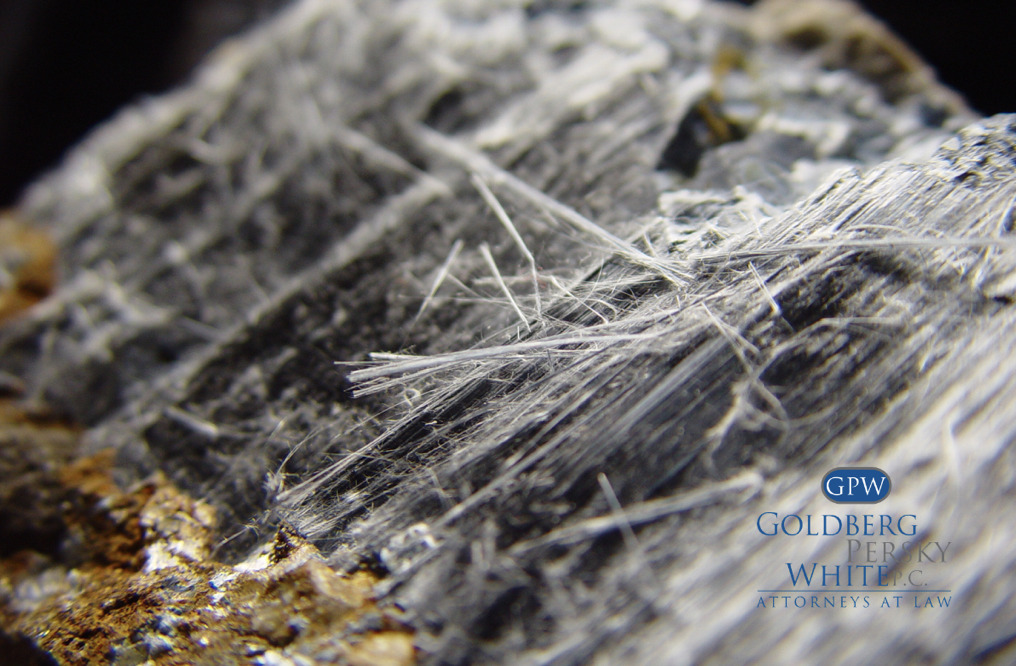Asbestos Products Produced Today in the United States
Asbestos is fire resistant, absorbs sound, strong, abundant, and cheap, so naturally it was a popular building material in the United States and throughout the world in the 20th century. The thin, needle-like, almost invisible fibers of asbestos appear to be mild: no smell, no taste, and does not immediately irritate the eyes, nose, or throat. However, it is now known that asbestos is a carcinogen, as these tiny fibers become embedded in the lining of lungs and tissue in the throat, causing mesothelioma, asbestosis, lung cancer, and laryngeal cancer.
In 1976 the Toxic Substances Control Act (TSCA) went into effect, allowing agencies like the Environmental Protection Agency (EPA) control in banning harmful substances. Asbestos seemed like an obvious substance that would be banned since the cancer it is responsible for causing is one of the deadliest cancers, but loopholes in the legislation have kept asbestos in our country for decades, and is still used today.
Mining asbestos in the United States is illegal, and hasn’t been mined since 2002. However, the U.S. still imports asbestos from other countries all over the world, with Brazil (77%) and Canada (22%) being the largest suppliers. In 2015, about 360 tons of asbestos was consumed by the United States; a number that has been decreasing steadily over the years. Mainly, asbestos is used in building maintenance, construction, and other industrial activities that do not pose a great threat of asbestos exposure. Asbestos is heavily regulated in the United States, but with imports coming in from different areas throughout the world, industries and manufacturers are still allowed to produce certain products that contain asbestos. Those products are:
- Pipeline wraps
- Clothing
- Vinyl floor tiles
- Cement pipes
- Disk brake pads
- Gaskets
- Millboards,
- Roof coatings
You Have Rights, Even in Your Own Home
Asbestos can still be found in the home because it was used so abundantly, so it is important to be able to identify, and know how to properly handle it. The US Department of Housing and Urban Development (HUD), a government agency designed to provide and create strong communities and affordable homes, has specific guidelines for how homes must be handled if they were built before a certain time period.
When inspecting a building, an environmental report must be provided to the HUD that identifies any environmental issues with the property. The HUD in turn is then responsible for determining that there are not illegal environmental factors that could potentially be a safety or health hazard. Under the HUD, asbestos must be addressed in the environmental report and by the sponsor’s architect if the building or structure was built before 1978. This means that on any building constructed before 1978, a qualified asbestos inspector must survey an entire building, locating and identifying the conditions of asbestos found. If asbestos is found then the HUD enacts a combination of asbestos abatement and the Operations and Maintenance (O&M) Program, which is an operation focusing on proper training, cleaning, work practices, and surveillance to maintain and control asbestos and asbestos containing materials in buildings that are in good condition.
If the asbestos found is not damaged, then the HUD recommends the asbestos be encapsulated. Under the HUD, the cost of asbestos removal can be included in the mortgage. Finally, all asbestos removal products have to be done in accordance with EPA and OSHA regulations.
The more asbestos a person is exposed to, the more likely they are to develop an asbestos-related disease. This dose-response relationship is affected by the quantity of asbestos one is exposed to, and the duration of the exposure. However, just because one may not have worked with asbestos, or may not have had a long exposure to asbestos, does not mean they are safe. There is no safe exposure limit for asbestos – the smallest introduction of the carcinogen could have lasting, fatal affects. It is terrifying to think that asbestos products still exist in the United States today, despite the known consequences.
For over three decades, GPW has specialized in the practice of asbestos law, representing many individuals throughout the U.S. who have been diagnosed with mesothelioma, lung cancer, or other asbestos-related diseases. As a result of this focus, our mesothelioma lawyers have the knowledge and experience to fight for the best possible asbestos compensation.



